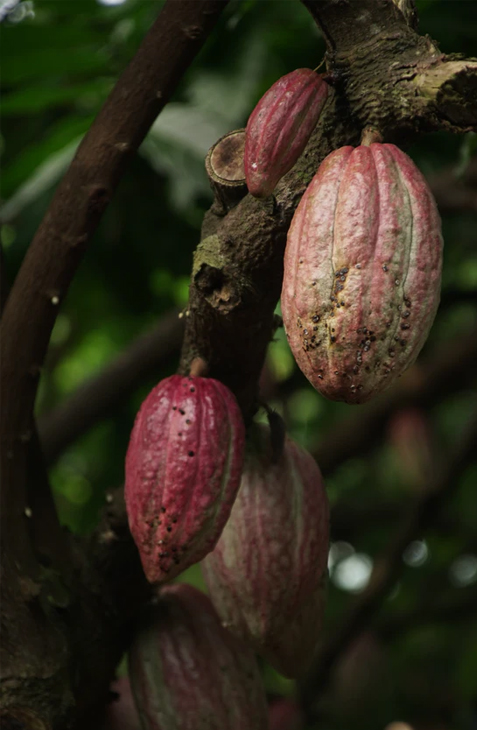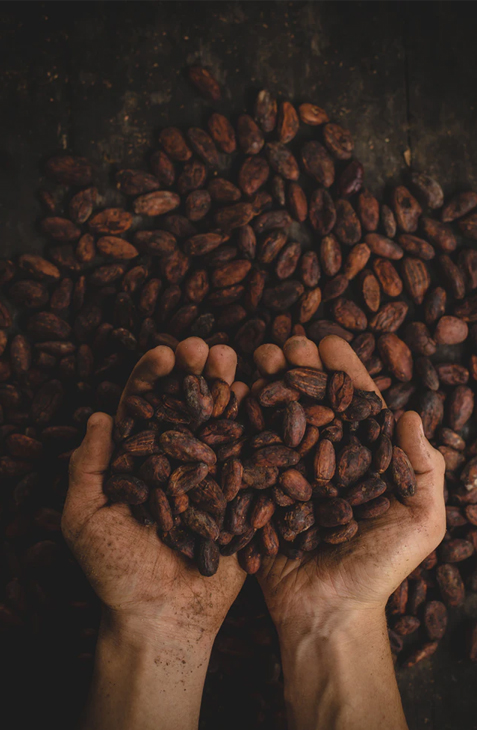From the Aztec gold cups to the cups of the whole planet: the history of chocolate.

Chocolate not only tastes great, but also a fascinating story.
Chocolate is the small daily delight of all people - a beverage that, along with coffee, is perhaps the most widely spread on the planet. People from every corner of the world can come closer to a mug of steaming chocolate - for most, it's probably the sweetest memory of their childhood.
But how did the hot, delicious chocolate get to our cups? We try to trace the history of chocolate from Guatemala's highlands to Ivory Coast, passing through fallen emperors, ruthless conquistadors and slaves, colonists and people from all over the world. Come with us!
 In the depths of time and the Aztec Empire: the beginning of chocolate.
In the depths of time and the Aztec Empire: the beginning of chocolate.
The history of chocolate has its roots in South America, in the territories of present-day Guatemala and Mexico, where the cocoa tree is native. According to historians, cocoa has been known to the indigenous peoples of South America for thousands of years, while its bean-based drinks have been manufactured as early as 450 BC. The chocolate boom comes at the same time with the consolidation and the boom of the Aztec empire, who regarded the cocoa beans as a gift from the god of wisdom, Quetzalcoatl, and reach the point of using them as a coin: a wild rabbitcosts 10 beans, while a slave a few hundred. The noble Aztecs use it as a beverage in their social gatherings, while in many Aztec and Mayan warrior burials, grave offerings include cocoa beans and cccoa powder.
The original form of chocolate drink is very different from the one we enjoy today. The people of Pre-Columbian America used to serve their chocolate thick, bitter, and without sweeteners. Two of the most common ingredients of this "ancient" chocolate were the hot chili peppers, which counteract the cocoa bitterness, as well as the corn puree, which gave the drink the required density. Although today, South America is following the "western" standards of chocolate making, Chilate is still served in some parts of Mexico, a beverage reminiscent of chocolate roots that certainly looks very strange to modern palates.
Emperors & Conquistadors: Europe gets to know cocoa
Europeans first came into contact with chocolate at the time of the great explorations, when Spanish explorers met the Aztec Emperor Montezuma in 1519. Montezuma served chocolate as a sign of their goodwill and hospitality, while the quantities consumed by the emperor, as well as the meticulous preparation of the drink astonished the Spaniards.
The Spaniards brought the cocoa beans and Aztec recipes back to their homeland, but Europe came to life a few years later by Mayan slaves who brought other exploratory expeditions home. Its bitterness is a deterrent to its spread, but the addition of sugar and milk brings it closer to European tastes. In a Europe living in the fever of exploration and thirst for new products from distant countries, chocolate is starting to find its audience, having to compete with other "new" products such as tea and coffee. The first major chocolate companies started in the mid-18th century, and many of them continue to this day.
 The cultivation of cocoa is expanding: the era of colonialism
The cultivation of cocoa is expanding: the era of colonialism
With the demand for cocoa beans steadily ebbing, European settlers are starting to grow coffee in various lands, far from the crop of the plant. Thus, within a century, cocoa plantations have been established by English, Dutch, Spanish and French in the Caribbean, Venezuela, Brazil, and even the Philippines. The herbalists officially classify the plant, giving it the name "Theobroma Cacao", meaning "Cocoa: the food of the gods" and its processing is standardized by processes that are quite similar to today's. Following, through colonialism, a reverse course from that of coffee, the cacao tree arrives in Africa, where the climatic conditions favor its cultivation.
Chocolate today
The cacao trees that give us the precious beans (and therefore the delicious chocolate drinks we enjoy today) are divided into three basic varieties, Forastero, Criollo and Trinitario, with the former accounting for 80-90% of world production and the other two, rarer and more expensive, to be considered gourmet options. Cocoa is cultivated in a number of countries, from Latin America and Central Africa to Asia, with Cote d'Ivoire and Ghana producing the most cocoa worldwide, with cultivation being its main pillar. their economy.
Chocolate, of course, reminds almost nothing of the Aztec priests' thick, bitter and hot drink. Combined with sugar and milk for years, chocolate is the basis for a myriad of recipes, both for simple, everyday sweets such as chocolate bars, and for more luxurious and sophisticated choices. As for the chocolate drink, it is now one of the most popular beverages in the world, and is consumed by children and adults around the world, usually with the addition of milk. The choices in chocolate beverages are endless, as one can find traditional, cocoa-rich and more original drinks that combine chocolate with other favorite flavors, such as caramel, praline or even peanut butter.
When Emperor Montezuma ordered his servants to prepare the finest chocolate for his guest, Conquistador Cortez, he could not have imagined that this mug would crave the whole planet 500 years later. May he rest in peace under Quetzalcoatl's gaze!










